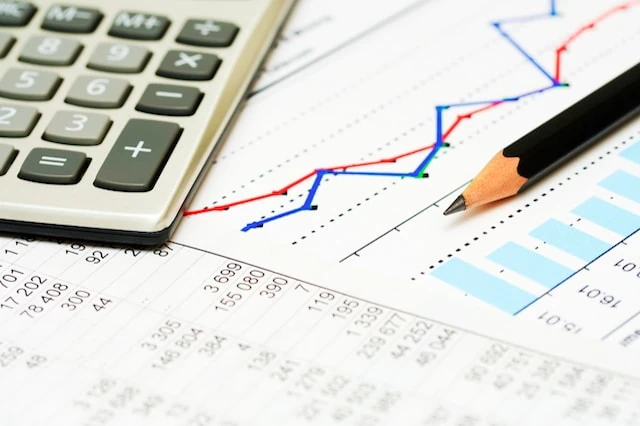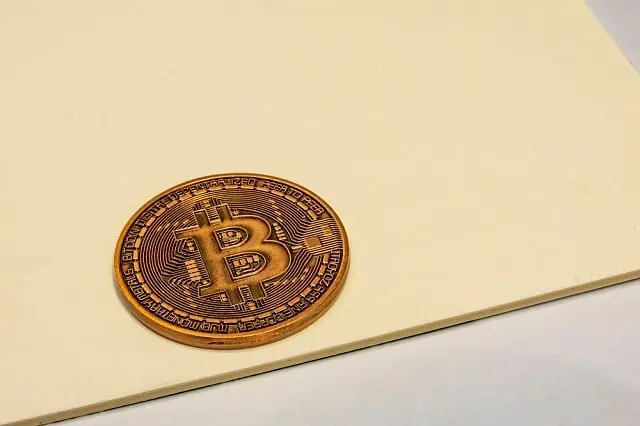Allow me to draw a straightforward breakdown about assets: assets you acquire either appreciate or depreciate. They do so for many reasons in either category, but the assets truly worth having tend to fall in the former category: appreciating assets.
If you hold assets that appreciate in value for enough time, you’ll go in the right direction toward building wealth. In other words, with time, assets either grow in value (appreciate) or lose their value (depreciate).
Capital appreciation means an asset increases in value, while depreciation means it is worth less as time goes by. With the exception of some rare, classic vehicles, it’s well known that cars depreciate quickly. If you buy a new vehicle and use it for a few years, it’s unlikely you’ll make more money reselling it than you spent on it.
This article focuses defines appreciating assets, provides a listing of appreciating assets worth buying, alongside other related concerns.
Let’s jump in!
Table of Contents
Best Appreciating Assets to Consider—Top Picks
|
4.0
|
4.7
|
4.8
|
|
Minimum Investment: $1,000
|
$99 for 1st year; $199 renewal
|
Minimum Investment: $10
|
What Are Appreciating Assets?

Appreciating assets are those which increase in value as you own them. This means they gain value at least at the same rate as inflation, otherwise they become depreciating assets. Ideally, you’d want these assets to grow in value faster than inflation to earn a “real” return.
They represent an investment vehicle for growing your wealth and represent a way to earn investment returns through capital appreciation. Traditional portfolios contain a mix of appreciating and income-oriented assets to diversify your investments and provide for lower volatility.
Holding appreciating assets are merely one piece of a fully-diversified portfolio capable of enhancing your net worth over time.
Should You Purchase Appreciating Assets With Debt?
Some assets gain value the longer you hold onto them. If you strategically purchase items you know will become more valuable, you can build substantial wealth through them.
If an asset appreciates in value and is also functional, it can even be worth going into “good debt” for it. Good debt occurs when you spend money on something that yields a return greater than what you paid. For example, student loans that secure a degree necessary for a high-income job you land might be considered “good debt.”
Bad debt takes your money without repaying it in some way, such as gambling debt.
Below are some of the top appreciating assets to consider and can be used to build notable wealth.
List of Appreciating Asset Examples to Add to Your Portfolio
Have a look at the following list of appreciating asset examples to see which make sense for your investing needs. Buy the right assets and hold them long enough, and you’ll see your net worth increase in value. Some might work better than others for you.
1. Stocks

Likely the most commonly thought of appreciating asset, shares of stocks represent partial ownership of a company that trades publicly on the stock market. When chosen strategically, stocks can appreciate significantly. Some stocks carry greater volatility than others, meaning they represent riskier investments.
For example, penny stocks are notorious for sudden fluctuations and can rise and fall by a high percentage of their share value within a single day. For expert day traders, this volatility can make them substantial gains, but there is also the risk of just as substantial losses.
→ How to Research Stocks
A safer way to build wealth comes from investing in reputable companies that have proven to provide high returns across time. People who did their due diligence in choosing the best stocks over the last decade or more have made major gains in these high-return investments.
Investment newsletters aim to select these companies prior to having amazing runs. Affordable stock picking services like Motley Fool’s Stock Advisor target stocks with this kind of investment opportunity and highlights them to investors, helping them find immense profit potential over longer periods of time.
Growth stocks have largely come from the tech sector in recent years as they’ve had dramatic potential for growth without corresponding investments in traditional business costs like inventory. Tech companies like Apple, Alphabet, Amazon, Tesla and more have run up to all-time highs while some companies in struggling sectors have fought a major market downturn. Investors chose these growth stocks in hopes of building significant wealth in the long-run.
Make sure to research stocks with the best apps and tools thoroughly before purchasing. By investing in the stock market and buying an appreciating asset like index funds, either as exchange traded funds or mutual funds, they can increase in value.
Do this enough and consistently, you can increase your net worth and let the stock market do the heavy lifting for growing your financial security.
|
4.7
|
4.8
|
|
$99 for 1st year; $199 renewal
|
Premium: 7-day free trial, then $269/yr. ($30 discount)* Pro: 1 month for $99, then $2,400/yr.**
|
Related: 15 Best Investing Research and Stock Analysis Websites
→ How to Buy Stocks
You buy stocks through numerous types of investment accounts. I recommend using one of the best free stock trading platforms, Robinhood. Through Robinhood’s app or website, you can gain access to thousands of stocks and they charge no commissions to trade them, making them one of the best stock trading apps for beginners.
For expert investors, the platform provides detailed stock charts, trading tools and stock news so you can make informed decisions on which stocks to buy. New users receive a free sign up bonus to buy stocks just for signing up and funding their account with a nominal amount of money. This can represent an easy way to learn how to start investing with little money.
The assets you buy on the platform, when properly diversified, should appreciate in value and improve your net worth. Learn about the value of buying assets that appreciate.
- Robinhood is a pioneer in the investing app world, offering commission-free trades on stocks, ETFs, options, and cryptocurrency, as well as one of the deepest libraries of investing educational content.
- Investing for retirement? Robinhood will match 1% of any IRA transfers or 401(k) rollovers, as well as any annual contributions*, made to your Robinhood Retirement account—and you can get a 3% match on any new contributions if you subscribe to Robinhood Gold.
- Want more advanced trading tools? Download Robinhoold Legend—a desktop trading platform with real-time data, customizable layouts, deeper asset analysis, and more—for free.
- Robinhood's robo-advisory service, Robinhood Strategies, will build you a custom portfolio of stock and bond ETFs (and individual stocks for accounts with at least $500), for a low 0.25% in AUM, which is capped at $250 annually for Robinhood Gold members.
- Robinhood Gold also includes Level II market data provided by Nasdaq, higher interest rates on uninvested brokerage cash, lower margin trading rates, bigger Instant Deposits, and access to the Robinhood Gold Card (a 3% cash-back Visa credit card).
- Special offer: Sign up for Robinhood, link a bank account, and fund your account with at least $10, and receive a randomly selected cash amount between $5 and $200 to put toward certain fractional shares.
- Very good selection of available investments in brokerage accounts
- 1% match on rollovers, IRA transfers, and new contributions to IRAs and Roth IRAs (3% new-contribution match with Robinhood Gold)
- Automated recommended portfolios
- Intuitive interface
- Robo-advisory service (Robinhood Strategies)
- Extensive educational library
- No mutual funds in brokerage or IRAs
- Match doesn't apply to Robinhood Strategies accounts
Related: Best Brokerage Account Sign-Up Bonuses, Promotions and Deals
2. Rare Art

Fine art is an incredible asset, already used by the billionaire class for centuries. In fact, contemporary art specifically has outpaced the S&P 500 by 136% over the last 27 years, while also outpacing real estate and gold during inflationary periods. Plus, contemporary art has a low correlation to stocks, meaning it can still go up even when stocks are crashing. Like in 2022, when art had one of its best years on record despite a massive correction in tech stocks like Apple and Meta.
Even better, investing in this contemporary art is easy, thanks to a fintech company based in Manhattan’s financial district. This company, called Masterworks, allows everyday investors to buy a small slice of $1 million to $30 million paintings from iconic artists like Banksy and Basquiat. Masterworks buys the art, stores it, and holds it until it appreciates in value. When they sell it again, you get a prorated portion of any profit. They’ve passed +$49,000,000 in art sold so far, the net proceeds paid out to genius investors who know diversifying means looking beyond just stocks and bonds.
The minimum investment to get started through Masterworks is $1,000. It should be noted that this type of asset is illiquid and can’t be sold as quickly as other appreciating assets.
If you’re passionate about art and looking for a long-term investment, you may be able to capitalize on blue-chip paintings appreciating in value. Sign up to learn more.
- Masterworks allows investors to buy shares in art selected by the platform's team for both high quality and strong value.
- The service offers a secondary market where investors can sell shares if they want to exit their investment early.
- Provides an easy way to invest in art
- Access to dedicated support representative
- Investing requires a call screen consultation
- High fees
- High minimum investment per offering ($15,000), though it can be waived to as low as $500 on a case-by-case basis
Related: Best Investment Apps and Platforms
3. Real Estate

Most types of real estate investments act as some of the most popular things that hold value over time. While the market fluctuates, real estate value historically goes up as time passes. There are many different avenues to consider if you’re interested in building wealth through real estate.
Purchasing a house can be a wise financial decision because it’s a functional investment. As your home increases in value, you continue to have a place to live. Home values often outpace inflation, especially in growing cities.
Other forms of real estate, such as commercial real estate or office buildings, are things that appreciate as well. However, investing in apartment buildings or large office complexes often poses too great of an investment for most retail investors looking to do everything themselves.
You might consider investing in smaller dollar amounts through crowdfunding platforms or REITs.
4. Crowdfunded Real Estate Platforms
If you want to own a stake in a property you wouldn’t be able to afford on your own, consider investing in crowdfunded real estate platforms.
In this situation, multiple investors pool smaller amounts of money to own a proportional stake in the property, mortgage, or portfolio. Investors receive dividends as well as gain from the property’s appreciation when sold.
Fundrise is one of the best-known and trusted platforms for people who want to invest in crowdfunded real estate.
Fundrise investors have portfolios containing multiple real estate assets. As individual assets appreciate or depreciate, the overall portfolio’s value adjusts. For example, one might invest $1,000 and receive dividends over the course of the next year. Additionally, because the properties increase in value, the portfolios may then be worth more even without reinvesting dividends.
Using passive income apps like Fundrise allows investors to take advantage of real estate professionals, rather than spending endless hours researching on one’s own. These professionals identify the best properties to invest in based on sales comparisons, public infrastructure investments, demographic changes, and more.
Investors can get started on Fundrise for as little as $10.
- Regardless of your net worth, you can now benefit from real estate’s unique potential for generating consistent cash flow and long-term gains with Fundrise starting as low as $10.
- Enjoy set-it-and-forget-it managed portfolios with standard Fundrise accounts, or actively select the funds you want to invest in with Fundrise Pro.
- Diversify your portfolio with real estate, private tech investing, or private credit.
- Low minimum investment ($10)
- Accredited and non-accredited investors welcome
- IRA accounts available
- Highly illiquid investment
Related: 18 Best Passive Income Apps that Give & Make You Money
5. Real Estate Invest Trusts (REITs)
Another way to invest in real estate without buying entire buildings is through real estate investment trusts (REITs).
REITs, companies that own (and usually operate) passive income-producing real estate investments, typically trade like public stocks. You choose a promising REIT and invest in your chosen amount of shares.
You have a likelihood to receive dividends and you can sell your shares at any time. Usually, the longer you wait, the more your shares have gone up in value and the higher your profit will be should you decide to sell.
Publicly-traded REITs list on major stock exchanges and you can purchase shares through stock brokers. I recommend checking out the commercial REITs on SoFi Invest, especially if you already use their website or app for stocks. The platform provides useful information about each REIT, such as the current price, market cap, analyst ratings and more.
It’s also possible to open an individual retirement account (IRA) on the platform, which is useful if that’s where you ultimately plan for your REIT earnings to end up.
- SoFi Invest's IRAs allow you to trade or invest in stocks, ETFs, and options with no commissions (or options contract fees) and no account minimums.
- Invest for as little as $1 with fractional shares.
- Robo-advisory services, including goal planning and auto-rebalancing, available for annual 0.25% AUM fee.
- No opening fees
- Good selection of available investments
- No options contract fees
- DIY and robo-investing options
- Fractional shares
- Modest closing fee ($20)
- No mutual funds
- Limited trading tools
- No tax-loss harvesting
- No socially responsible robo-advisor functionality
Related: Best Investment Apps for Beginners
6. Fine Wine

You don’t need to be a wine connoisseur to understand why fine wine can be a worthwhile investment. Wine often increases in quality as it ages and that makes it more valuable.
With rare wines, supply and demand works in your favor. Only a finite amount of wine is produced in specific regions each year and as people drink that wine, the supply diminishes. As demand increases for the dwindling supply, the price people are willing to pay for it rises.
Fine wines usually deliver long-term, stable growth. Wine does not correlate strongly with the economy and can hedge against inflation and economic recessions.
The U.K. government considers wine with a lifespan of 50 years or less as a “wasting asset” and therefore doesn’t typically qualify as taxable income. If the wine counts as a “wasting asset” in the U.S., you shouldn’t need to account for wine as taxable income, which helps with your overall profit margins.
Unfortunately, you can’t simply buy a bargain wine from the grocery store, stick it in your basement for a few years, and expect profits. If you want to make money from wine, it needs to count as rare, authenticated wines which investors store in optimal conditions.
Unless you already have vast knowledge about wine, and a professional storage setup, I recommend using the app Vint. The company ensures wine authenticity, stores it for you and sells it once reaching a target price range.
Vint leverages extensive market research and analysis to develop and source each collection offered on the wine investing platform. Once purchased, the company transfers the wines to Vint’s climate-controlled storage partners where they are monitored, insured and kept safe until sale.
The company creates shares based on their wine investments and offers them to investors. You only need to purchase one share, which can be below $50 in some cases, though investment offerings may vary at any time.
The share price represents the cost to acquire the wine plus a sourcing fee that ranges between 8-10% on average. From there, the company files paperwork with the SEC to register these shares as securities.
Vint provides historical price data and research for each collection alongside commentary from the company’s experts. The company targets certain time frames and sell ranges for the spirits offered for investment on the platform. Timing and returns can vary from expectations, but when sold, they distribute all pro-rata proceeds to investors. They will issue a 1099-DIV form declaring this information for the relevant tax year.
Consider learning more about Vint and whether it represents an investment that might interest you.
- Vint is a fine wine and spirits investment platform that allows accredited investors to buy SEC-qualified shares of elite alcoholic beverages from around the world.
- Vint takes care of everything—sourcing, transportation, storing, insurance, and selling.
- Vint invests alongside shareholders
- Simple user interface
- Potentially very high fees
- Accredited investors only
- Extremely illiquid investment (1- to 7-year holding periods, no secondary market for shares)
7. Land

My father-in-law believes the best investments he’s ever made were in land. He came to America in hope of a better life and found land to be a pathway to it. He has owned dozens of parcels of land in his life and still holds many strewn across the West coast to this day. He doesn’t have any intention of changing that any time soon.
Why? Because he (rightfully) believes land to be an appreciating asset. At least in the region of the country he’s focused on for the last five decades (the West Coast), he’s been right in almost every instance.
Raw land might seem like a liability from the upkeep and ongoing expenses but it can most assuredly deliver upsized returns when chosen carefully and held for long periods of time. Land appreciates in value based on two classic dynamics seen in economics: constrained supply (they’re not exactly building more land every day) and increasing supply. What you get in this scenario is increasing price.
One major asset class focused on the value of land (outside of real estate covered above) is farm land.
Many generations of Americans farmed the land to provide food supply and cash crops not only for themselves but others around the world. America’s fertile soil can produce agricultural products demanded the world over. That’s why investing in farmland might be one of the best decisions you can make for acquiring appreciating assets that also yield income.
While not necessarily something you’d like to do as a full-time job, you can invest in farmland through a service called FarmTogether. This platform allows accredited investors to access this illiquid market and earn passive income from these farmland investments.
Another benefit of this type of investment comes from the historically low correlation to traditional assets like stocks and bonds. In other words, this provides a hedge portfolio volatility and also against inflation. Over the past several decades, American farmland has consistently yielded over 10% per year.
Consider tapping into this market if you’ve got $10,000 to invest to start and qualify as an accredited investor.
- FarmTogether is a technology-powered investment platform w/direct access to institutional quality farmland.
- The FarmTogether team sifts through hundreds of opportunities to select only the best ones. Opportunities vary by type, expected return and location.
- Accredited investors can get started with just $10,000.
8. Cryptocurrencies

Over the last five years, cryptocurrencies have burst onto the scene as an asset class all their own.
Cryptocurrency statistics show they’ve come from non-existence to a collective market capitalization of more than $2 trillion in the last 10 years. A remarkable rise, to be sure. That represents the fastest rise of any asset class in history in terms of the magnitude of returns investors have made.
But should you consider adding a position in your portfolio for cryptocurrencies?
Many millennials have stated they see Bitcoin as a better risk-off asset than gold, driving a significant rise in ownership during the COVID-19 market downturn. This broke down in recent times as inflation rose and cryptocurrencies tumbled. But now that the SEC has approved spot Bitcoin ETFs for retail investors to add exposure to their portfolios, many see this as a recognition of the digital asset finding a place to stay.
Going forward, the rapid rise in value likely underpins a continual interest in holding at least a small position in cryptocurrencies. So, how can you begin investing in cryptocurrencies? Many investing apps offer the ability to purchase major cryptocurrencies like Bitcoin, Ethereum, XRP and more.
The best app I’ve found for investing in cryptocurrency has been eToro, a social investing app that allows you to replicate the trades made by professional crypto traders on the platform. You can also take up the common practice of “HODL” made popular by the cryptocommunity, meaning “hold on for dear life.” This is a long-only focused investment strategy given the inherent warning of embracing the investment and holding through market volatility.
There’s no denying the risks involved with crypto investing with the wild swings and massive capital flowing into the asset class. This is why you should only consider starting to invest with a small portion of your overall portfolio in this new investment category. Like nearly all investments, your capital is at risk and you can lose money. Before proceeding with cryptocurrency investing, make sure you understand the risks involved.
That said, given the unbridled interest seen from investors the world over, it seems like these virtual currencies are here to stay.
If this sounds like something worth exploring, try opening an eToro account and making an initial deposit to begin investing in cryptocurrency.
- The eToro trading platform allows you to buy and sell stocks, ETFs, and options with 0% commission, including no contract fees on options.
- Trade dozens of the most popular cryptocurrencies.
- Not sure what kind of trading strategy you want to employ? eToro allows you to replicate the trades of popular traders automatically, in real time.
- Test out your strategies with eToro's $100,000 practice account.
- $100 minimum deposit to get started.
- Special Offer: Get $10 when you deposit $100 or more.*
- Good selection of available investments
- No options contract fees
- Fractional shares
- Copy trading functionality
- Strong technical analysis tools available
- $100,000 virtual portfolio included for free
- Charges withdrawal fee ($5)
- Doesn't offer robust fundamental tools
- Unavailable in 4 U.S. states (NY, NV, HI, and MN)
9. Gold, Silver and Gemstones

Not only are these common jewelry elements beautiful and functional (if worn), but they are also physical assets that appreciate in value over time. Further, many award premiums values to these luxury items that appreciate in value because they have remained popular for thousands of years.
In fact, humans have always placed value in precious metals and stones and that sees no signs of abating any time soon.
Gold tends to go up during inflationary times and during times of economic and financial stress. This means that when the U.S. dollar loses value, people turn to the security of gold and, in turn, gold prices rise. You can purchase this alternative investment option directly as bars or coins.
Alternatively, companies offer exchange-traded funds (ETFs), such as the SPDR gold trust, to invest in companies which closely track the price of gold.
Silver receives less press coverage than gold, but may act as an even better investment because it has more practical applications. Silver also carries a lower price point, therefore making it more accessible to invest in than gold. Like gold, you can also purchase silver outright or through silver ETFs.
Gemstones historically rise in value over time, even when the stock market is down and currencies lose value. Some of the top gemstones, in terms of appreciation, include:
- Rubies
- Blue Sapphires
- Emeralds
- Spinel Gems
- Tsavorite Garnets
- Spessartite Garnets
This is not an exhaustive list. Whether you inherited precious gemstones or can acquire them cheaply, they will likely carry higher prices in the future. If you choose to invest in gemstones, check with a certified gemologist to ensure your gems are genuine.
Also, see here for advice on how much to spend on an engagement ring.
10. Alternative Investments
As another option in line with the appreciating asset examples listed above, you might also consider looking into alternative investment options that tend to appreciate in value.
Have a look below to narrow your search by reviewing the best investment opportunities available to you. You’ll see some familiar names because they’re mentioned in this list but you might also come across other opportunities of interest.
|
Primary Rating:
4.7
|
Primary Rating:
4.7
|
Primary Rating:
4.5
|
Primary Rating:
4.5
|
|
Minimum Investment: $50,000
|
Minimum Investment: $5,000
|
Minimum Investment: $10,000
|
Minimum Investment: $500
|
Buy Appreciating Assets That Grow in Value Over Time
To get ahead and secure a safe retirement, you must save money. However, you also want to invest your money in assets that will appreciate in value. Inflation can decrease the value of your savings because prices usually go up in the future.
While tempting for their risk-free nature, the interest earned in a high-yield savings account or certificate of deposit (CD) can balance out what you lose to inflation, but not always. Even above-market yielding assets can fall behind a diversified, long-term oriented investment portfolio.
Comparatively, many assets rise in value quicker than inflation and become worth more the longer you hold onto them. Some of the best investments for young investors, such as your private home, have a practical use as well. Additionally, if your appreciating asset provides dividends, you can earn money even before selling your assets.
To build wealth, try to avoid depreciating assets (unless they qualify as functional) and obtain assets that will appreciate in value.
Diversification counts as a key to successful investing, so consider which assets complement each other well enough where if one declines in value, another makes up the difference. The sooner you purchase appreciating assets, the more time works in your favor for them to increase in value as much as possible.
Related Questions to Assets That Appreciate in Value
Is a House an Appreciating Asset?

Appreciating assets are an important part of any well-balanced investment portfolio. Because a house likely represents the single largest purchase you’ll ever make, you’d like to consider your house an appreciating asset. But is it?
That depends on a number of factors:
- Location – where the house sits
- Size – how many bedrooms and bathrooms your home has, the square footage of your lot
- Upgrades – what improvements have been made to the property?
- Time span – when was it bought; is there a trend in housing prices for this location that suggests appreciation will continue?
- Costs incurred by others – are repairs or improvements going to be done by another?
- Property Tax – does your county and state have a history of high property values that suggests appreciation can continue in the future?
- Condition of Property – what is the condition of the house? Has it been neglected over time or maintained well, do you see evidence that upgrades will increase in value more than depreciation?
The physical asset depreciates in value over time while the land may appreciate in value. That’s a fact.
Where the question differs comes down to the investment you make in the home and whether you will come out ahead when you sell.
If so, and the returns outpace inflation or investments you could have made elsewhere, then you can consider your house an appreciating asset.
Is a Car an Appreciating Asset?

Normally, no. Cars do not count as appreciating assets. However, in our upside down world, where pandemics cause supply shortages for new automobiles, used cars actually appreciate in value.
It’s a simple question of supply and demand: as fewer newer cars can hit the streets, people still need transportation of their own. Thus, greater demand for used cars pushes up their prices rather their usual descent.
In normal times, however, cars are not examples of appreciating assets.
Do Older Houses Lose Value?
Older homes don’t necessarily lose value. Their value can increase if they meet the right conditions like those listed above.
If you maintain the home, it retains desirability, and the surrounding area continues to improve and become more attractive in value, older houses might not lose value.
Is a Bank Loan an Asset or Liability?

A bank loan is a liability, plain and simple. However, using a bank loan to augment your purchasing power for buying appreciating assets can make it a tool to increase your net worth.
The debt level should decrease with time as you make regular mortgage payments and the house should be an asset that appreciates in value.
If you can make this work, a bank loan won’t be completely a liability in the traditional sense.
Objectively, though, a bank loan is a liability and should show as such on your personal balance sheet.
What Assets Do The Rich Buy?

The rich buy lots of different types of assets, but many are made up to be more valuable by the fact that they can appreciate in value.
Some examples include investments in the stock market, bonds, and property.
All these investments have an inherent risk associated with them because there is always a chance you will lose money on them if things don’t work.
That said, the rich tend to buy appreciating assets and hold them for long periods of time.





















